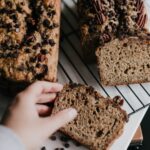Diets come and go. Some can improve your health and wellness, while others can be pretty detrimental.
When it comes to the Atkins Diet, one thing’s for sure: it’s been in vogue for over 30 years and continues to help people lose weight and stay thin. If you’re curious about the Atkins Diet, read on to find out if it’s right for you.
What Is the Atkins Diet?
In 1972, cardiologist Robert C. Atkins developed this diet to help people lose weight by reducing their carbohydrate intake and increasing their fat and protein consumption. Why did Dr. Atkins think this approach would work?
Well, some people have a difficult time shedding pounds for one of two reasons. First, their bodies produce too much insulin, a condition known as hyperinsulinism. Otherwise, people can’t get thin because they have metabolic resistance to losing weight.
The Atkins Diet provides specific vitanutrients believed to help you overcome these two obstacles.
What are these two vitanutrients? One is an amino acid called L-carnitine, which helps your body convert fat stores into fuel.
The other necessary vitanutrient is a co-enzyme called Q10, or CoQ10. This also helps to convert fat stores into fuel.
What Happens on the Atkins Diet?
The Atkins Diet is a low-carbohydrate program that allows you to eat more protein and fat. This naturally reduces your appetite. So, you’ll eat less, but still feel satisfied. Plus, you eliminate access to sugars by cutting back on carbs.
You might think it’s the same as the Ketogenic diet, however, there are some slight variances.
To begin with, the Atkins Diet is divided into 4 phases. Let’s take a look at each one.
Phase 1: Induction
At the onset of your diet, you’re not allowed to consume more than 20 grams of carbohydrates each day.
What does that look like?
It’s about 2/3 cup of couscous or mashed potatoes. Or, 1 banana or a large apple.
Normally, we get about 60 percent of our daily caloric intake from carbohydrates. In Phase 1, you reduce this to about 10 percent.
In short, you drastically reduce your carbohydrate intake and kick-start your body to start losing weight by burning fat stores.
How long do you stay in Phase 1? It all depends on your weight loss goals. You can safely stay in Phase 1 to lose weight if you feel energetic, sleep well, and have stable moods. Your doctor can also monitor your blood chemistry, pressure, and sugar levels to ensure that your body is healthy and stable.
What’s the very latest point to be in Phase 1? If you’ve only got 15 pounds to go, it’s time to move on to Phase 2.
Phase 2: Balancing
In this phase, you can gradually introduce nuts and seeds into your diet, along with a little more fruit (about 25 grams of carbs daily), but continue eating low-carb veggies.
Just as the name implies, it’s all about understanding your body’s metabolism.
By paying close attention to how your body responds to certain types of carbohydrates, you’ll learn how much and what types of carbohydrates lead to weight gain and which ones allow you to maintain balance and equilibrium.
Phase 3: Fine-Tuning
You should enter Phase 3 when you’re almost to your desired weight loss goal.
Here, you can add more carbs until you stop losing weight. The point of Phase 3 is to create balanced and sustainable eating patterns that you can continue for life.
You will always focus on eating more fats and proteins, but carbs will be an important part of your diet, too.
Phase 4: Maintenance
Once you’ve lost all the weight you want to, it’s time to enjoy proteins, fats, and carbs together.
If you start to gain weight again, simply cut back on carbohydrate consumption and go back to Phase 3 to find the perfect balance for your body and its metabolism.
Foods on the Atkins Diet
As we’ve learned by now, proteins and healthy fats are always allowed. Carbohydrates are restricted, but it all depends on your Phase. Here’s a quick Atkins diet food list you should keep in mind.
Foods for Phase 1: Induction
- Proteins, such as poultry, meat, eggs, cheese, fish and shellfish
- Healthy fats, such as coconut oil, avocado oil, extra virgin olive oil
- Low-carbohydrates from vegetables like spinach, kale, asparagus, peppers, green beans, cucumber, broccoli, and celery
Foods for Phase 2: Balancing
- Same as above
- Add more nutrient-rich carbs, like berries, nuts, and seeds
- Legumes, such as moderate amounts of lentils, chickpeas, and beans
Foods for Phase 3: Fine-Tuning
- Same as above
- Reintroduce starchy and/or high-carb vegetables, like potatoes, sweet potatoes, carrots and turnips
- High-carb fruits, including pears, grapes, oranges, apples, and bananas, as well as certain whole grains
Foods for Phase 4: Maintenance
- Same as above, unless you begin to gain weight. If you do, return to earlier phases to reduce carbohydrate consumption
What Foods Are Not Allowed on the Atkins Diet?
As you can see, the Atkins Diet puts a lot of restrictions on carbohydrates, but there are some things to always avoid while on the Atkins Diet, no matter what phase you’re in.
Here’s a brief round-up of the forbidden foods on Atkins diet:
- Grains, such as barley, wheat, oats, rice, etc.
- Sugar, especially soda drinks, ice cream, candies, and juices
- Vegetable oils, such as canola, cottonseed, soybean, and corn oil
- Trans Fats, also known as “hydrogenated oils”
- Low-fat / diet foods are discouraged because they’re usually low in fat but high in sugar
Your Nutritional Needs on the Atkins Diet
By drastically cutting back on carbohydrates, you can run the risk of becoming deficient in B Vitamins, as well as Vitamin E and calcium. It’s best to consult with your primary care provider to check your vitamin and mineral levels to ensure that everything is in good shape.
To further ensure that you’re getting enough Vitamin B and E, as well as calcium, seek out allowable foods that provide these nutrients.
Animal products, from beef to fish, provide Vitamin B. Spinach, avocado, palm, and olive oil, as well as trout, are all good sources of Atkins-approved vitamin E foods, no matter what phase you’re in.
Calcium is present in cheeses, kale, broccoli, and sardines, all of which can be enjoyed from Phase 1 to Phase 4 in the Atkins Diet.
Health Risks Associated With the Atkins Diet
Unfortunately, some individuals run the risk of experiencing problems while on the Atkins Diet. Here are five common issues people run up against.
Weakness and Constipation
Without enough carbs, you can easily feel weak, fatigued and experience frequent headaches.
Plus, because your fiber intake from fruits and certain vegetables is drastically reduced, constipation is common during Phase 1.
Liver and Kidney Damage
Just like the Ketogenic Diet, your body moves into a state of ketosis on the Atkins Diet. That’s when your body burns fat, instead of carbohydrates, for energy.
There’s nothing wrong with ketosis. However, if your ketone levels are too high, it’s possible to harm both your kidneys and liver.
If you’re committed to the Atkins Diet, it’s best to have your doctor monitor your ketone levels to ensure that your kidney and liver health isn’t in danger.
Too Much Protein, Not Enough Calcium
By eating so much protein, it’s possible that your body will eliminate calcium stores through your urine. This can contribute to calcium deficiency and eventual bone loss.
Compromised Gut Health
Dr. Susan Jebb, nutritionist and head of nutrition at the Medical Research Council Human Nutrition Research Centre in the UK, says that your gut needs adequate amounts of carbohydrates and fibers.
Because carbohydrates are strictly restricted in the Atkins Diet, it can be more difficult to have a gut that functions optimally.
Wrong Individuals Follow This Diet
People who are seriously overweight and obese can consider this diet as a viable weight loss solution.
However, people who are only a little bit overweight usually don’t need such an extreme approach, and they run the risk of burning muscle mass instead of fat stores.
Health Benefits Associated With the Atkins Diet
Luckily, there are lots of desirable benefits from this low-carb diet. Here are just four reasons why it’s an attractive weight loss method.
Lose Weight Quickly and Safely
Because excessive carbohydrate consumption leads to weight gain and obesity, you can quickly lose unnecessary weight by cutting carbohydrates.
Not only will you consume less sugar, but you’ll also force your body to enter into a state of ketosis. This means your body will start to use fat stores for energy.
The Atkins Diet Satiates You
Because you enjoy high-quality fats and protein, it’s unlikely that you’ll feel hungry or deprived. Instead, you’ll feel satisfied and probably won’t experience sugar cravings.
And if your diet helps you feel fuller longer, you’re more likely to stick with it and see long-term benefits.
Prevent and Manage Diabetes
Too much sugar and processed sugars can wreak havoc on your blood sugar levels, causing them to rise and drop dramatically throughout the day.
Because the Atkins Diet removes and restricts your carbohydrate intake (depending on the phase you’re in), you keep your blood sugar and insulin levels in check and prevent them from spiking after meals.
Atkins Diet Works for Vegans and Vegetarians
What if you want to try the Atkins Diet, but you’re a vegetarian? Or, need to eat gluten-free? There are ways to safely follow this low-carb diet if you already have these dietary restrictions.
- For Vegetarians
Instead of meat, you can get adequate protein from foods like soy, eggs, cheese, nuts, and seeds. Good fat sources include olive and coconut oil.
- For Vegans
Instead of animal-based protein, enjoy legumes, seeds (including quinoa), nuts, and soy. Good fat sources include olive and coconut oil.
Gluten-Free
You’re in luck! Many gluten-containing foods are high in carbohydrates, and since you’re cutting back on carbs, you can safely eat almost everything on this diet, from Phase 1 to Phase 4.
You may want to lose weight, but the idea of cutting back and feeling deprived is so unappealing to you.
That’s where the Atkins Diet may come in handy. If the idea of bacon and eggs, bun-less cheeseburgers and lots and lots of butter make you smile, this may be the perfect way for you to kick-start your weight loss journey safely and without missing out on delicious meals.
As always, there is no one-size-fits-all diet. So, be sure to check with your primary care physician to see if this is a smart and safe approach to obtaining greater health and wellness.








